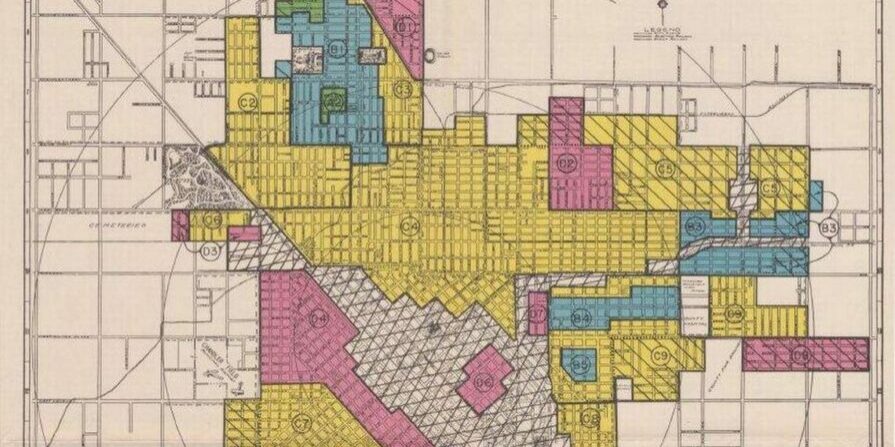Project Outlines
Crossing the Line

Step 1: The Build
Fresno, California is a city marked by stark socioeconomic divides that have deep historical roots. It is also home to the Fresno Bee, a longstanding local newspaper whose newsroom leaders have begun to focus their efforts and resources on how to better serve the Fresno community through journalism.
In July 2018, Spaceship Media partnered up with the Fresno Bee and NEWSCo/Lab to discuss how dialogue journalism could benefit Fresno. The Bee reporter assigned to this project, Brianna Calix, was interested in finding some way to create dialogue across the major socioeconomic divide between North and South Fresno. With this in mind, we worked together to brainstorm a signature dialogue journalism approach that would accomplish this.
Step 2: The Gather
With the project topic decided, the hard work began. ‘Fresno’s socioeconomic divide’ isn’t exactly a problem that can be solved in a few weeks, so we had to specify our scope and expectations. The overall strategy was to engage The Bee’s audience in concentric circles:
- The most removed engagement:would involve general audience members who read the articles about the project and were given regular opportunities to take polls related to the topics under discussion;
- The second ring of engagement:was those residents who took our 10-question survey but were not selected for the more intimate convening discussions that would be held. They were kept informed via email about the details of those meetings and the insights gathered, and were later invited to join the Crossing the Line Facebook group;
- The closest ring of engagement: was the about 20 people who would take part in two in-person convenings, be provided with feedback from those events, and were the first to join the Crossing the Line Facebook discussion group.
With a layout established, we were ready to bring our project to the public.
Step 3: The Welcome
To start, we sent out a 10-question survey to the Bee’s audience. The survey asked several basic demographic questions and included questions like this:
- What’s the dividing line between north and south and why?
- What do you think of people on the other side of the dividing line?
- What do you think they think about you?
- What do you want to know about them and their neighborhood?
- What do you want them to know about you and your neighborhood?
- Where do you get your news about your community (friends, family, online, Bee)?
- What do you want The Bee to know about you and your neighborhood?
- What do you want to know about the The Bee?
- How do you feel about how the Bee portrays/reflects your community/neighborhood?
From the survey responses, we were able to select about 25 folks to represent Fresno’s population who were the first to engage in discussion with one another. This took us to step 4, the actual conversation experience.
Step 4: The Experience
Not all dialogue journalism projects involve in-person discussions, but Crossing the Line did. We held two meetings with those 25 people selected from the survey responses, and one final meeting, open to the public, when the project came to an end. Hailing from every corner of Fresno, these participants represented the diversity of experience that the city contains.
Those meetings were one part of the conversation experience; our Facebook group was the second. The 25 people who attended the first two meetings were the first members of the Facebook group. Using the in-person conversations as a launchpad, they continued to discuss various topics relating to Fresno’s divide online. Midway through the project, the people who had taken our original survey but who did not participate in the in-person meetings were invited to join the Facebook group.
Steps 5: The Carry
The moderation for this project included an online component as well as an in-person conversation structure where all 25 participants’ voices were heard, encouraging those participants to speak out and then engage with one another.
At the in-person meetings, Brianna Calix proposed questions to the entire group, then participants divided into smaller groups to discuss their answers. They wrote their responses on index cards, which were then read and shared aloud and discussed with the whole group.
Step 6: The Nourish
Calix asked questions about the Fresno school system, housing, community health, and more, always asking participants to offer their personal experiences. While these stories acted as productive jumping-off points for rich discussion, Calix did not hesitate to provide more context and facts, mostly in the form of local history, to bolster these discussions.
At the final in-person meeting, which was open to the public, two experts in Fresno’s divide addressed the audience to discuss redlining and community health. Although no formal discussions followed this event, the Fresnans in the audience were still able to take part in this crucial step of dialogue journalism.
Step 7: The Share
For those who were not directly involved in the project, there was plenty of opportunity to learn about the Fresno divide. For the duration of the project, Bee reporter Brianna Calix wrote news stories and editor Joe Keita published a column about Crossing the Line. To see what kind of content came out of Crossing the Line, click on any of these stories:
Let’s talk about Fresno’s divide
This was the first story published, announcing the project to the Bee’s audience
Residents want to talk about Fresno’s divide and they want everyone to have a voice
Poll: Fresno’s north-south divide is real and rooted in racism, income inequality
For these residents, Fresno’s north-south divide was learned in school
Reporting “Fresno’s Divide” Wraps Up With Open Community Conversations